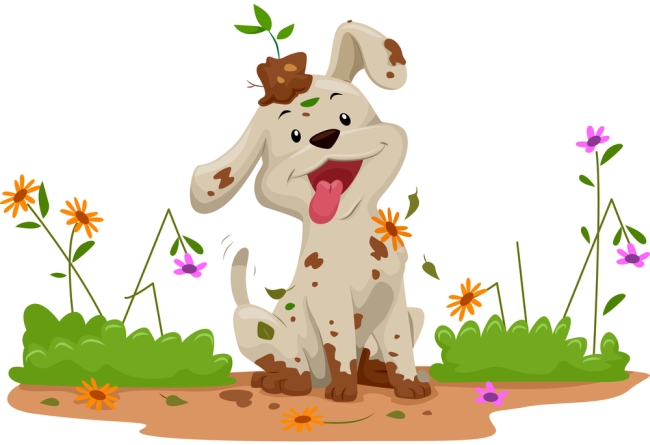
Whether you prefer growing roses or creating your own private pumpkin patch, cultivating a garden is no small undertaking. With all the weeding, bending over shrubs, watering and waiting for a highly anticipated payoff, gardening requires hours of work and dedication. If you are also a dog owner, this could pose a problem, since you and your puppy pal share the same affinity for digging up earth. Having a curious, investigative canine around might actually pose a threat to your seedlings and saplings, especially if the pooch is allowed to romp around the yard unattended. Protect your hard work by learning these tried-and-true tactics for how to tackle growing plants and raising puppies simultaneously.
How to Keep Your Garden Pet-Free
- Compost with a twist: Send those padded paws prancing elsewhere, by sprinkling some herbs and spices that will turn up your puppy’s nose. Some pet-owners found that crushed mustard powder mixed with an array of crushed dry peppers was enough to keep their dogs away. Another useful combination is fresh roasted coffee mixed with a good dose of bitter orange oil. While the mustard/pepper combo will be less effective after the rain, bitter orange oil is stronger and more water resistant. (And the good news is, this combo makes a great compost component!) Canines abhor certain aromas and flavors, so spreading some naturally repelling ingredients over the soil will deter dog visitation.
- Bitter Apple Spray: Another successful method of chasing dogs away from newly budding plants, is to spray some vinegar-based, heavy citrus, or bitter-apple sprays near the perimeter. This will resonate immediately as an unpleasant experience that the dog will want no part of. (Like the pepper/mustard soil topper, these sprays will wash away in the rain so be prepared and have more product on hand!)
- Natural “fencing” with pokey barriers: If you are determined to preserve as natural a garden as possible, use strategic plants to keep paws away from flower beds and veggie patches. Some avid gardeners insist that whenever they prune their roses, they line the thorny branches around the border of the garden. Most dogs will not venture past them, for fear of getting pricked.
- Wireless fencing: One way of creating a dog-free zone is to use an invisible barrier. In-ground wireless fencing requires planting a thin wire several inches underground, in the shape of whatever perimeter they wish to protect. By wearing a corresponding collar, the dog will hear a warning noise when he approached the buried wire. If he crosses it, there will be a sharp (yet humane) static correction that will send him away from the line! This is a great option for the aesthetically-conscious, as well as those who want to block areas of an unusual shape. (This tool also works well for pools, fence-replacements, etc.) A less intense method of protection would be to use the ultrasonic sound emitter that will sound a noise that is inaudible to humans, but uncomfortable for dogs. By setting the boundaries of the ultrasonic device around the garden, you can help control where your pet is free to roam.
- Water Sprayers: You know how a splash of water from a spray bottle will keep your pup’s nose out of the kitchen? The same applied to garden-guarding, only this time, you don’t have to do the work! A motion-sensing product, these water sprinklers sense when an animal is approaching, and will automatically shoot streams of water in their direction. This works well for live-in hounds as well as prowling animals who have wandered onto the property.
- Animal decoys: Sometimes, a warning object is a good way to keep dogs out of trouble. Set up a motion-sensor product called “Solar Brite Eyes” which mimics the glowing dull red eyes of predators, shining in low-light hours such as dawn, dusk, and evening. This is the perfect tool for when you let your dog outside for his nightly “elimination.” While some owners may not wish to strike fear of predators lurking in the backyard into the hearts of their precious puppies, this method will most certainly keep veggie-stealing raccoons, and lettuce-munching bunnies and deer out of the cabbage patch!
Part of maintaining a dog-free garden is making sure that your pup has plenty of his own space to play (whether indoors or outdoors), toys to play with, and quality time with YOU, so that he will not need to stick to your side whenever it is gardening time. By keeping a healthy balance, your pup will feel free to explore the rest of the world to his heart’s content, leaving your peaceful garden alone.

